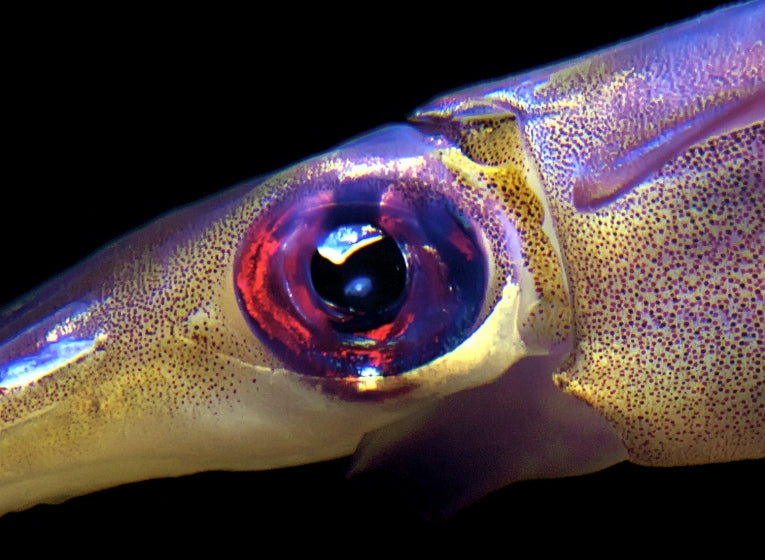The size of 27cm (11inches) would dwarf any other eyes in the molluscan, fish or mammalian world. Only ichthyosaurs (fossil marine reptiles) would have a similar size of eye. Squid have developed totally unique vision separately from the fish's movable lens and our own squeezable lens.
Mesonychoteuthis and Architeuthis are the two summits of mollusc evolution. From humble winkles with simple eyes through whelks to cuttlefish, this great phylum of animals has progressed through most of evolutionary time. Cuttlefish have wonderful vision to cope with their exotic colour change signals to each other, but these two huge, 10m squid relatives had to have a special adaptation-size.
They are subjected to one of the great unseen predations of all time. No-one has ever witnessed the struggle between one of the two giant squid and their arch-rival, the monster of three miles deep. It is of course the giant sperm whale, from whose scars we can tell the progress of many such battles. Sonar echo-location spots the squid for the whale in the darkest depths of the ocean. The squid has a selective need to develop better and better senses too. Its answer has been the detection of huge objects in the dark, and these eyes are the tool. Mathematical calculations estimate the two large eyes could better detect a pattern of point sources from the bioluminescent microorganisms in the water at 120m. A sperm whales bulk would disturb those light sources in an unmistakeable way. The speed of the squid's jet propulsion could then evade the predator.
Mesonychoteuthis is the "colossal squid" the sperm whale prefers in the southern ocean . It is the species that leaves great sucker scars and hook marks on the head of sperm whales. Architeuthis is the streamlined, faster-moving genus of giant squid that has species researchers are still trying to separate and name correctly.
The ecology of the deep sea is one of the major problems nowadays as we still can't penetrate there to sample anything of what happens. The ancient seas too need some illumination, as Prof Nilsson believes the giant eyes of ichthyosaurs were evolved for a similar reason. Their giant predators are thought to be the pliosaurs, working in the same type of ecosystem, in the ocean depths.
Professor Dan-Eric Nilsson of Lund University and Soenke Johnsen of Duke University in the US were among the research team who were able to dissect a deep-frozen specimen of Mesonychoteuthis at the Museum of New Zealand and experiment on the fresh eyes. The journal 'Current Biology' published their work.










